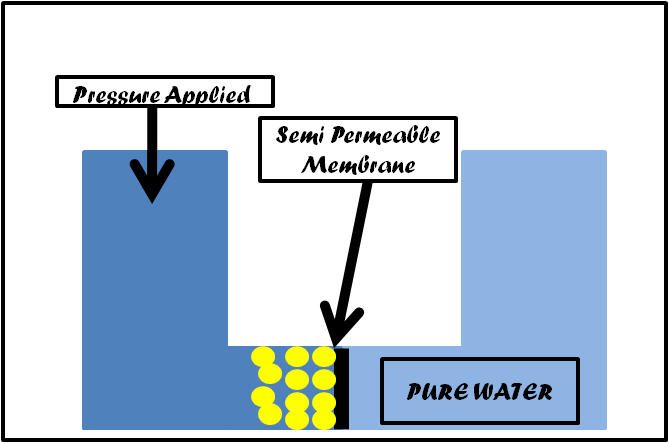Looking at a atomic level or a molecular level, it is very evident that it is a great idea.
- Firstly, we must understand and acknowledge that the water molecules are far smaller than the other kinds of molecules such as ion, etc.
- Secondly, we must also understand the meaning of semi-permeable membrane:
- A membrane is a thin piece of sheet that does not allow molecules to pass, be it small or big.
- Semi means half so semi-permeable membrane means a thin sheet of material that only allows small molecules to pass.
- As there is a presence of holes in the membrane, it thus allows smaller molecules to pass through.
- However, in Reverse Osmosis, it usually only allows water molecules to pass as other molecules are too big for to pass through these holes.
- Thus, the key reason to why Reverse Osmosis is excellent!
So how does Reverse Osmosis exactly work? Let's observe it through an experiment.
- Seawater is pumped into the set-up and force is applied to the seawater.
- Seawater is constantly supplied.
- When the seawater contacts the membrane, salt molecules will be trapped and cannot pass through it.
- However, water molecules are able to pass through it.
- Therefore, the result of Reverse Osmosis will be pure water.
Why does this experiment work in this way?
- This is mainly because
- The salt molecules are bigger than the holes in the semi-permeable membrane.
- However, the water molecules are smaller and thus are able to smoothly pass through it as the semi-permeable membrane allows so.
- Thus, one side will have the seawater while the other will have pure water.
So, Reverse Osmosis is basically the usage of the semi-permeable membrane as a filter and making the solvent purer by means of forcing it through the semi-permeable membrane.
If you feel lost, refer to this picture, it may be better:
However, you may understand Reverse Osmosis better through this video: http://www.youtube.com/watch?v=rG29fwWoNkc&feature=related



No comments:
Post a Comment